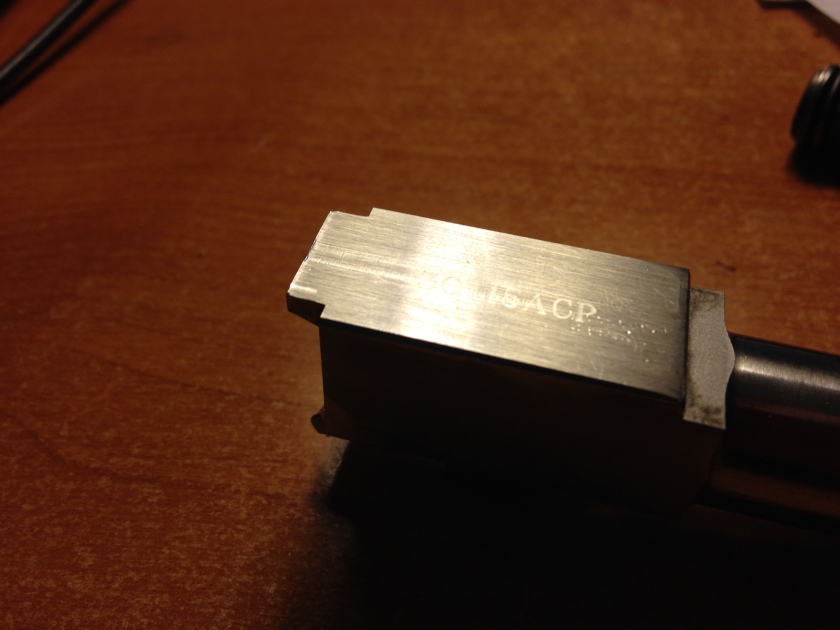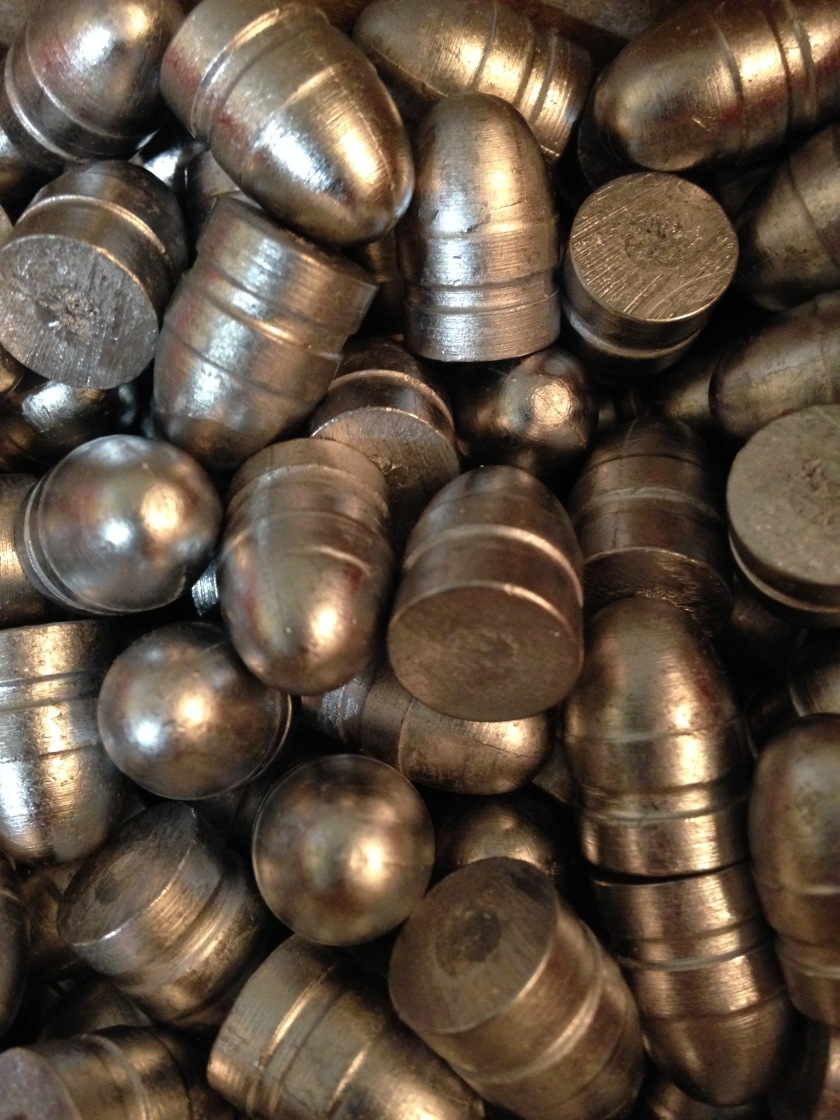Ever since Colt announced a return to the double action revolver market I’ve been spending some more time with my S&W 642. I’ve never handled a double action Colt before so I’ve been looking forward to getting my hands on their upcoming all steel Cobra. On the other hand, I’m sure I’m behind a host of others wanting to do the same thing. So in the meantime I thought I would put together a review/update on my old J frame, although its not exactly stock.
I’ve spent more than a little time with Smith & Wesson revolvers. The L frame 686 for one. Then there’s the J frame 642. It does the job ok but the trigger is “meh.” I don’t have a trigger pull gauge and I don’t need one. Find any stock J frame and pull the trigger; heavy and even sometimes gritty. They’re not that great, especially when compared to their K and L frame brethren. When my original 642 broke a hammer stud S&W stepped up and gave me a new one. Before it was delivered I remember asking a technician if it would be possible to have a trigger job done at the factory on my dime. “No, we have to ship it to you before any work can be done.” Rolling both eyes back, I pressed the issue. Finally the tech said “No, we don’t do trigger jobs on J frames.” Now bear in mind this conversation took place a year or so before S&W began offering what they refer to as enhanced actions on their 642 and 442 line of pistols. So be it. A couple weeks go by and I receive a brand new 642, complete with heavy and gritty trigger.
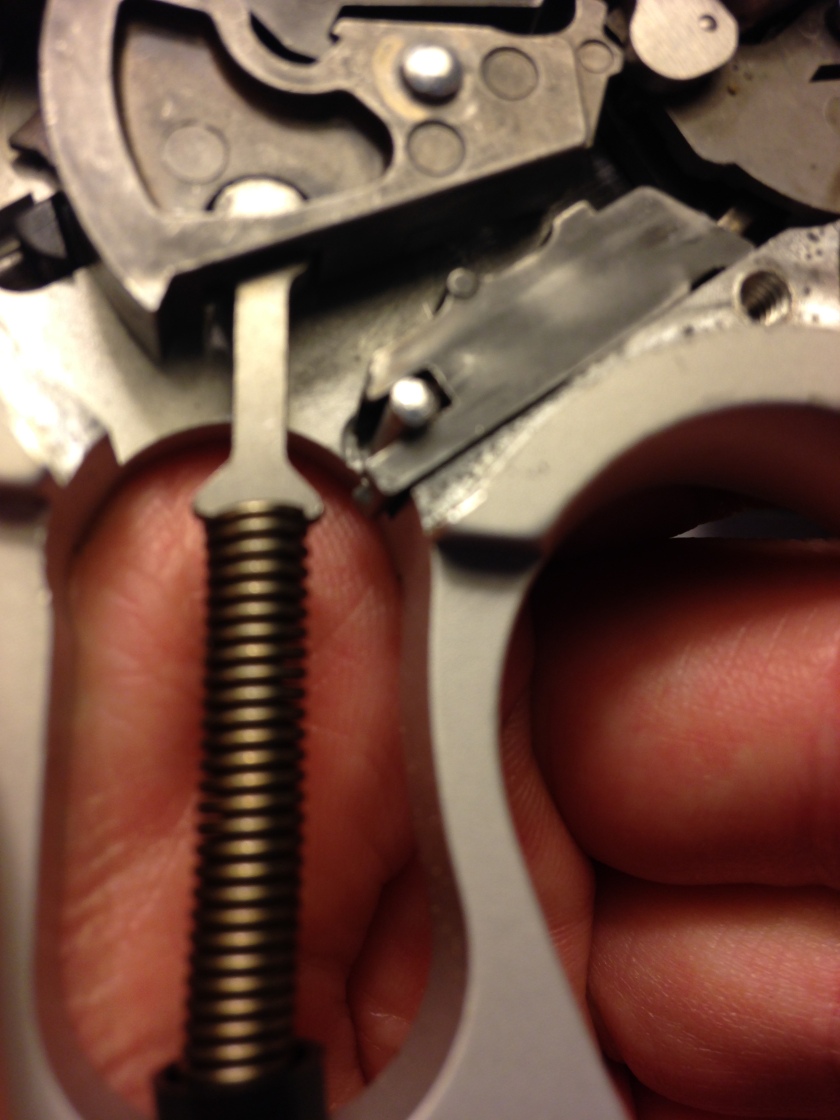
Being able to observe how parts interact when the trigger is pulled will allow you to become more proficient in diagnosing problems.
That would be the end of the story except that S&W generously designed their revolvers with three screw side plates which allow easy access to the fire control group. Since I had paid $385 for the first pistol and received another at no charge, I reckoned this one had cost me $192.50. That made me feel better about voiding the warranty because no sooner had the side plate come off than I was removing the mainspring, hammer, rebound slide, cylinder stop, ratchet pawl, firing pin, etc. Then the stones came out. I hit up the frame, side plate, rebound slide, and very specific points on the hammer and trigger. I took special care in avoiding the singe action contact points between the trigger and hammer. The joy of the S&W design is that by removing the side plate you can observe the action, how everything works, what contacts with what, and see everything move in relation to one another. I’m far from a gunsmith. At best a hobbyist. But if you have patience and are willing to learn you can stone an action.
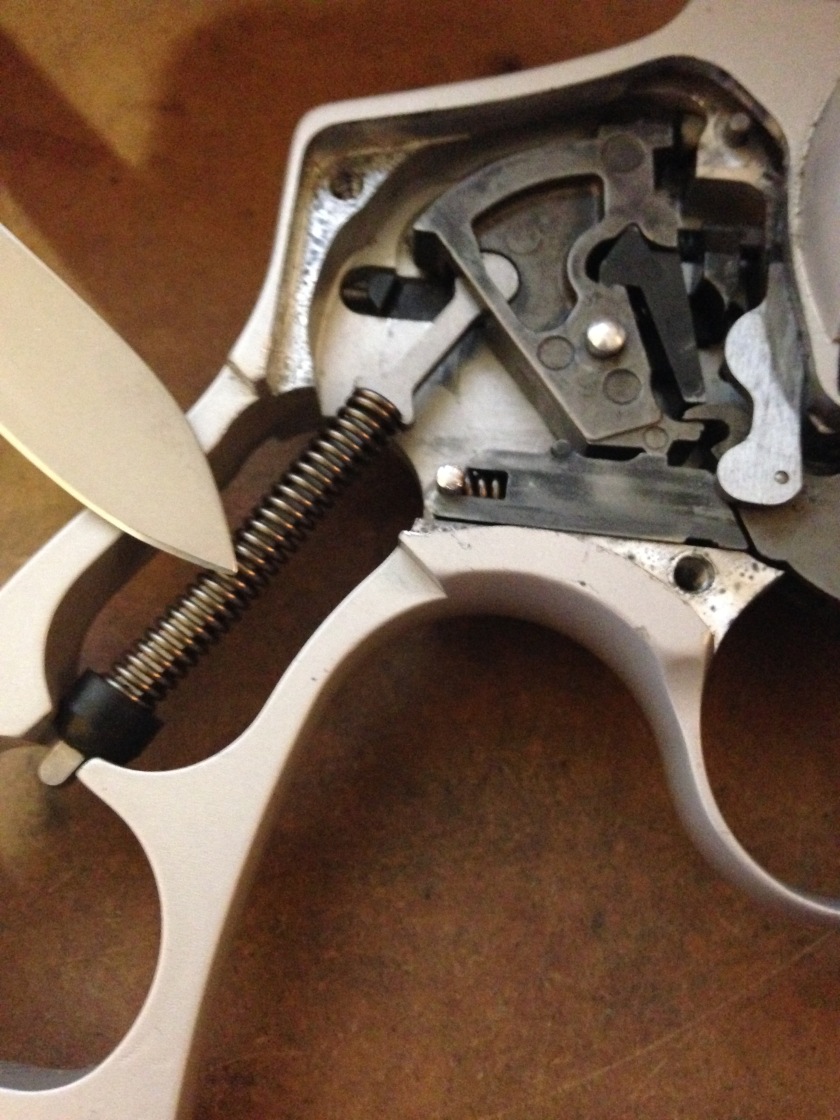
The design of S&W revolvers lends themselves to easy access of the internals.
After stoning was complete I replaced the stock rebound slide spring with a Wilson Combat 13 pound spring. The spring came as part of their Custom Tune Spring Kit #321 for J frames. After everything was back together I gave the trigger a try. Noticeably better… but not good enough. I eventually opted for the 8 pound main spring. This combination results in a slightly lighter trigger pull. Its not amazing, but it beats the heck out of the factory configuration. The only problem with lighter springs is the chance to have light primer strikes. With reloads and range ammo, no big deal. With defensive ammo, that’s a no-go. So I went to a big box store and picked up some factory carry ammo.
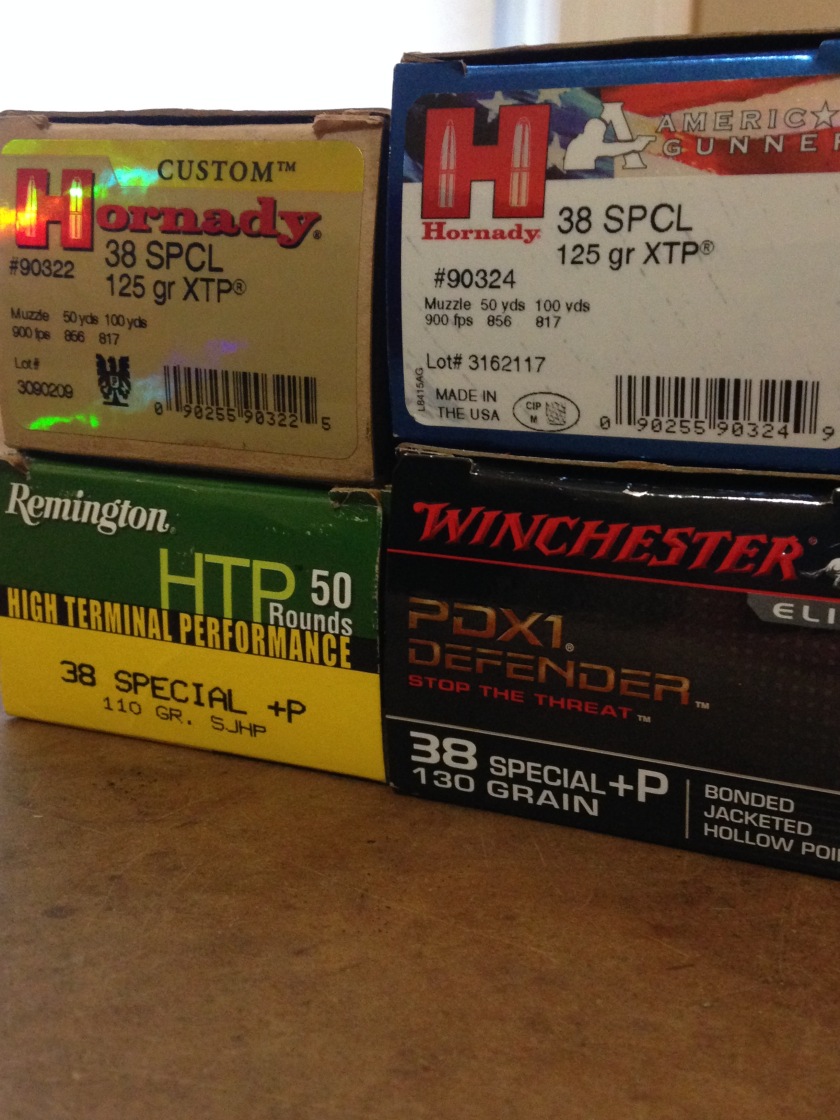
I fired the following loads over my chronograph to collect some data. Note the Hornady 125 gr. XTP old and new loads, #90322 and #90324. Apparently, #90322 is not offered anymore and has been replaced by the latter. The #90322 loads I had on hand were about 4 years old. Everything else was factory new or handloaded within the past month. Loads with (F) in the powder and charge columns indicate factory ammunition. The two handloads used my own cast RCBS 38-158-CM bullets sized to .358” along with CCI #500 small pistol primers. 10 rounds for each load were fired and all velocities are in feet per second.
| Bullet | Powder | Charge | Vel. Low | Vel. High | Avg. Vel |
| RCBS | Auto Comp | 5.0 gr. | 702 | 789 | 753 |
| RCBS | Trail Boss | 3.5 gr. | 564 | 671 | 633 |
| Hornady 125 gr. XTP #90322 | (F) | (F) | 804 | 860 | 829 |
| Hornady 125 gr. XTP #90324 | (F) | (F) | 775 | 884 | 819 |
| Remington 110 gr. SJHP +P | (F) | (F) | 900 | 975 | 952 |
| Winchester 130 gr. PDX1 +P | (F) | (F) | 787 | 877 | 826 |
I found in interesting how the older Hornady load bested the currently produced ammo by 10fps on average. Seeing as how velocities are so close I guess we can say it’s a wash. My load using 3.5 gr. of Trail Boss proved to be an excellent plinking load in a small aluminum framed revolver. It prints slightly high (1” at 9 yards) for the 642’s fixed sights but the recoil is comfortable. The most fun load was the Remington 110 gr. SJHP +P. While it sounds like a 357 magnum going off the bite doesn’t match its bark. I found the accuracy in my gun to be superb for plinking steel at 30 yards. Then there was the Winchester 130 gr. PDX1 +P. I was surprised in the velocity. Winchester advertises 950 fps on the box. I didn’t expect to lose 124fps out of my short barrel. It sure made up for the velocity drop by producing the best accuracy for the day. I was able to group seven rounds touching on paper at nine yards. Recoil for both +P loads was less than I expected. The biggest detriment to the Winchester was the insane price tag of $1.24/round. The Remington could be had for $.50/round. The Hornady fell between those two at $.68/round. Not surprisingly, the Remington and Hornady loads can be found online for several cents cheaper. The Remington load also provides nickel cases which extracted slightly easier than the rest.
Velocity and accuracy aside, how did the rounds function? Not one hiccup. Light primer strikes? Not even one. That’s not to say your experience will not vary. Every gun is a rule unto itself. To know what components work in your firearm require you to test and evaluate the results yourself.
Considering the interest and fanfare in the upcoming Colt Cobra, I may not be able to obtain one for some time. If I do, a review will be forthcoming. If nothing else I have a reliable J frame with a better than factory trigger.



